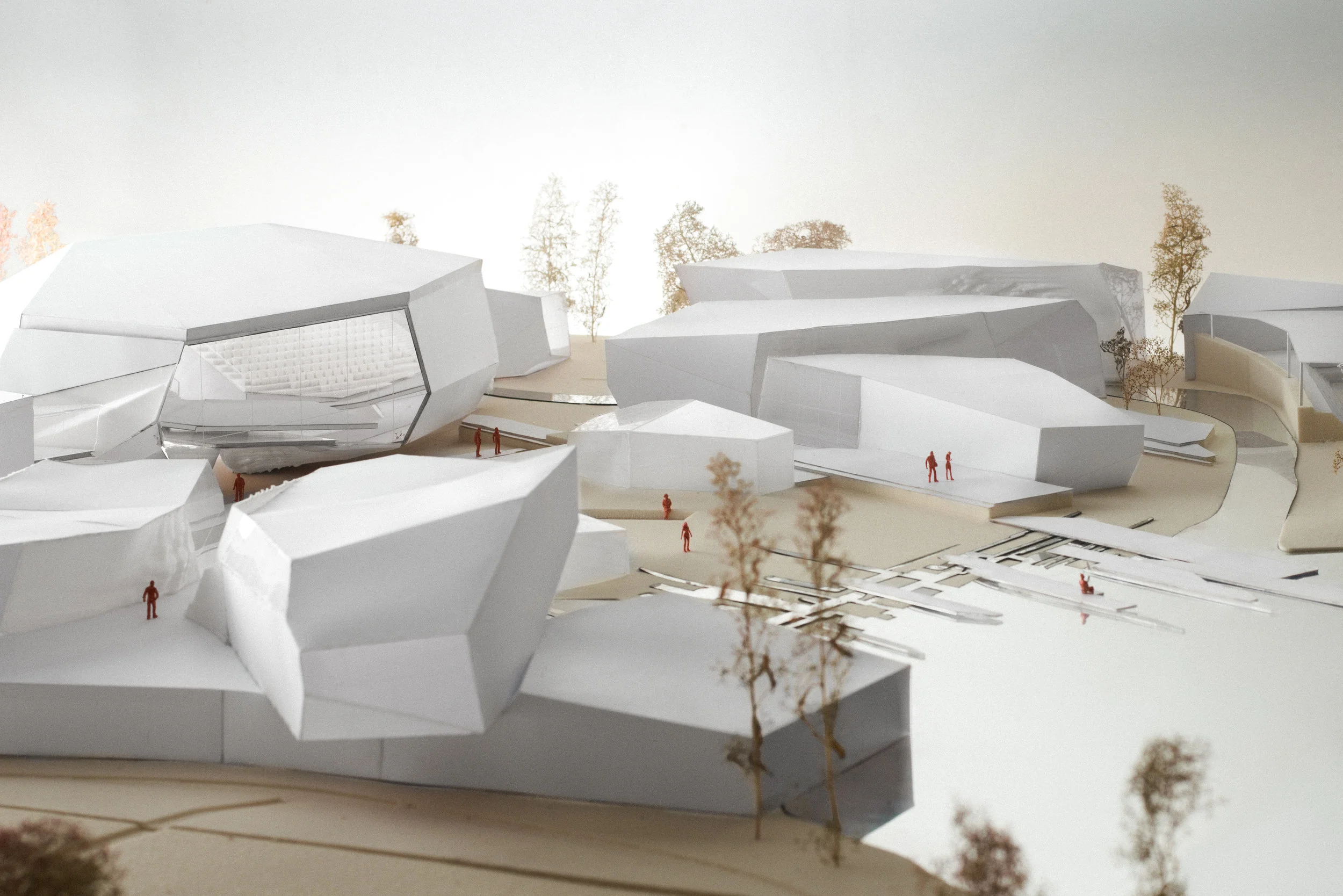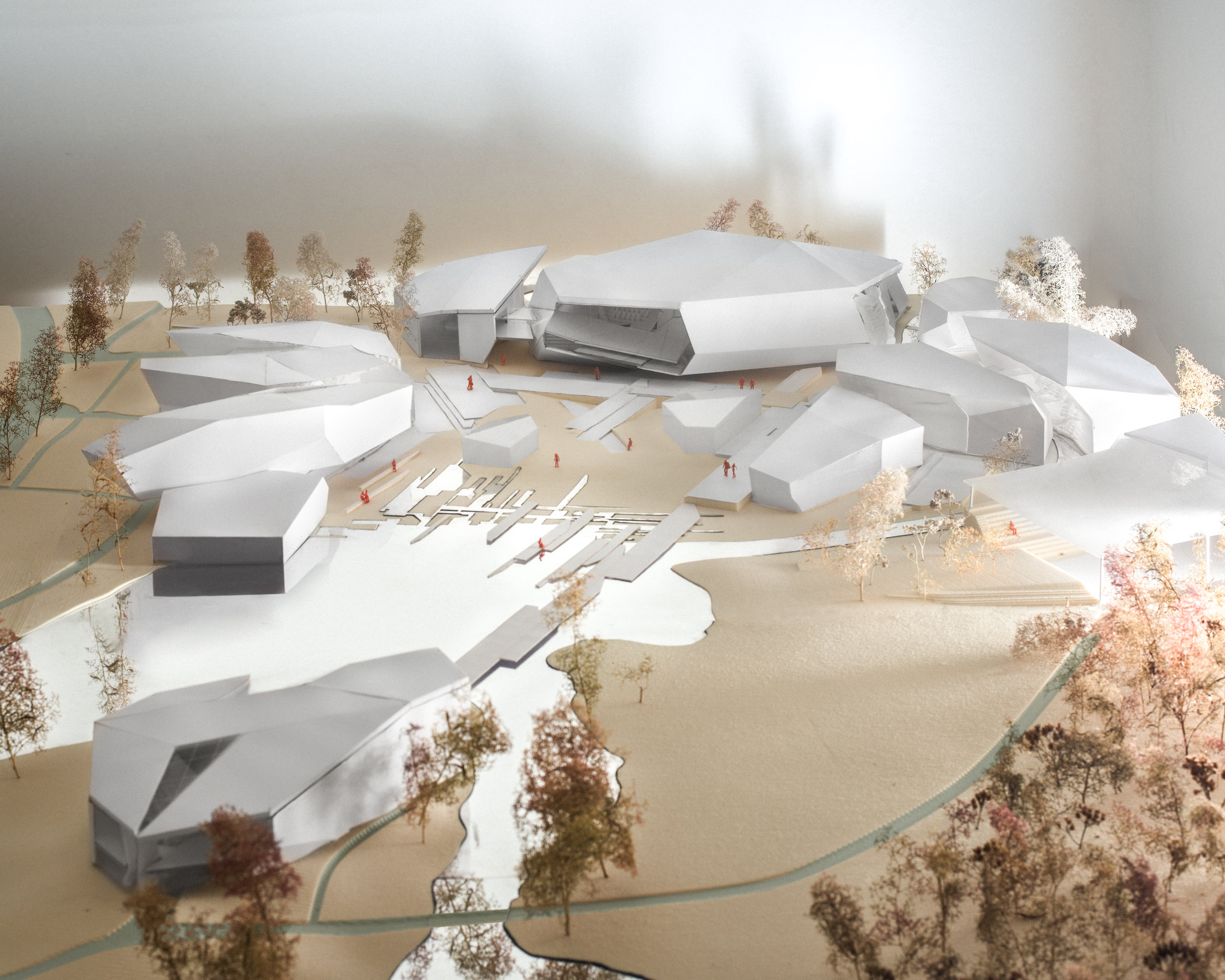THINK TANK - DRIFT
2017, Academic, with: Philipp Farana, Marion Waid, exhibited at “The Essence”, Group Exhibiton
The brief of this project was to design a “Think Tank” in the area of Schinkel’s “Römische Bäder” in Potsdam, Germany. The new design should investigate and apply Schinkel’ian methods and thinking in a contemporary design. After analyzing and visiting Schinkel’s work we were most interested in two different effects Schinkel achieves through architectural, natural and sculptural elements: The first is what Kurt Forster called Schinkel’s trick of poetic dislocation. It is an architectural effect where Schinkel would for example implement an unusual twist in the subject’s progression through the building or a particular space, throwing the visitor of the expected path. This effect is not exclusive to circulation but is also found in proportion, scale, tectonics always challenging the subject’s expectations. Secondly, after the visitor’s return to the path Schinkel would introduce another strategy to amplify the effect of the final destination: The framing of a specific view, by hiding certain elements while putting others into focus.
To apply these methods (1.focus, 2.dislocation) in the design of a contemporary think tank, one must understand that they are not bound to scale or style but rather to technique. They can be translated into building mass, structure, proportion, form, composition, circulation, etc. We consider them to be architectural layers that can be superimposed and mixed with each other. Additionally, they can be seen as spatial analogies or translations of certain thought processes within a think tank. Their goal is to create an architecture that engages with the mind and encourages to think creatively.
Using this methods, reflective walls guide the visitors and their view through the area towards points of interest. The surfaces treatment of the walls creates different reflection levels which, in focussed zones, get distorted heavily. A sense of dislocation is created by unexpected elements in the area: ways that lead to nowhere, circulations shifts, major jumps in scale, narrow openings, a library flooded with the water of the lake - all throwing the thinkers off their expected paths, allowing them to start from a new perspective.










